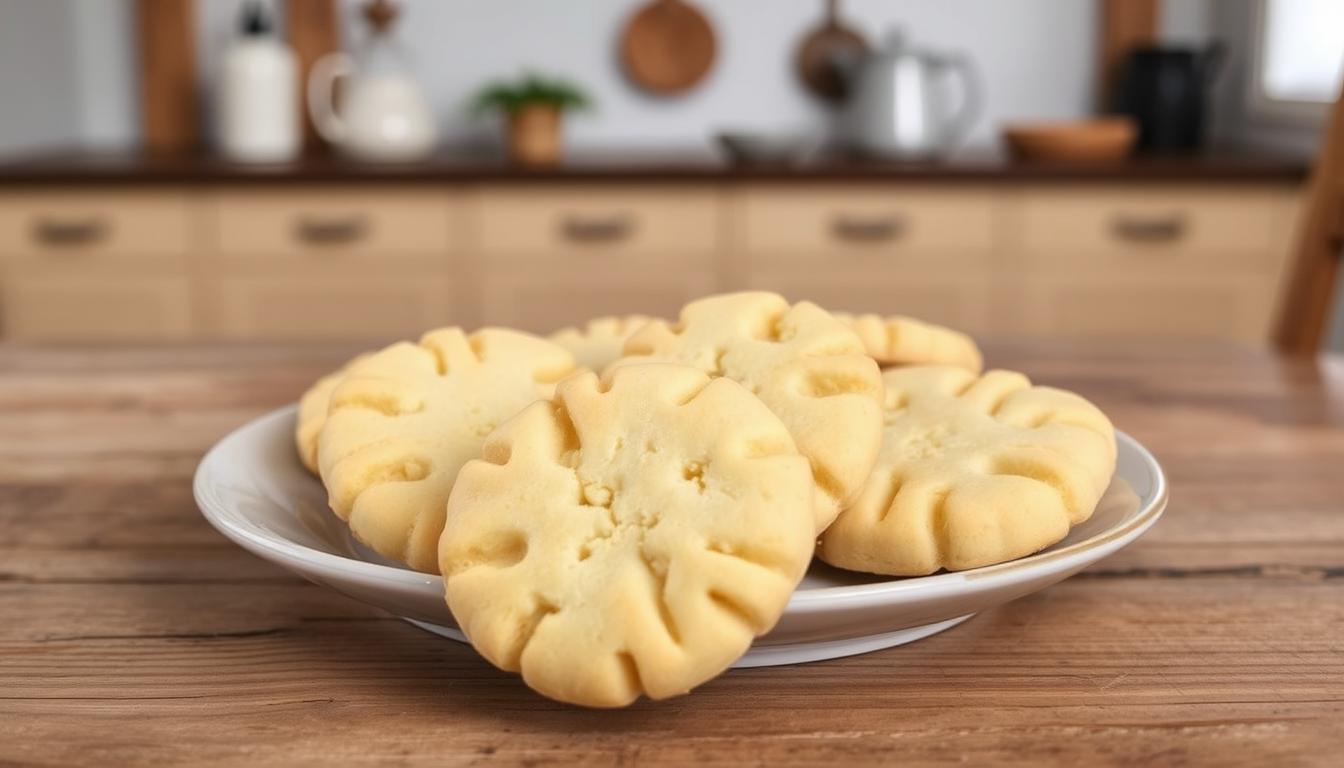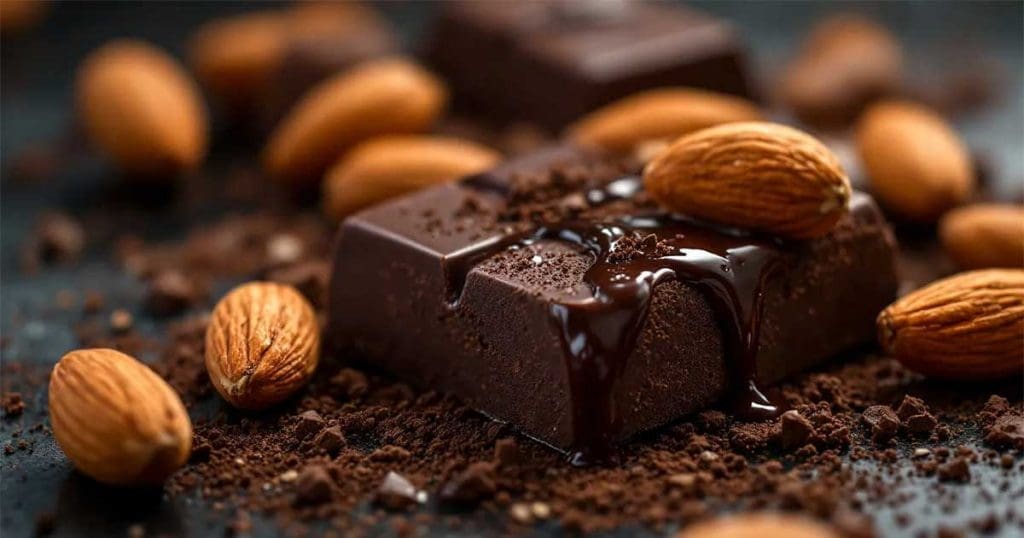On January 6th, people across the United States celebrate National Shortbread Day. They honor a traditional Scottish dessert that has become a beloved treat worldwide.
 Shortbread cookies are known for their buttery flavor and crumbly texture. They have a rich history that spans centuries. Originating in Scotland, these simple yet elegant cookies were made with just a few ingredients: butter, sugar, and flour.
Shortbread cookies are known for their buttery flavor and crumbly texture. They have a rich history that spans centuries. Originating in Scotland, these simple yet elegant cookies were made with just a few ingredients: butter, sugar, and flour.
The cultural significance of shortbread cookies goes beyond their delicious taste. They represent a connection to heritage and tradition. As we explore the history and recipes behind this classic dessert, we uncover the reasons behind its enduring popularity.
What is National Shortbread Day?
Shortbread is a beloved treat with its own special day. National Shortbread Day celebrates its rich history and tasty flavor. It honors the traditional Scottish biscuit, loved worldwide.
A Brief History of Shortbread
Shortbread’s roots go back to medieval times. It became popular in the 18th century. The use of butter and sugar, once luxuries, made it a hit with the British aristocracy.
The traditional shortbread recipe is simple yet flavorful. It’s made with flour, butter, and sugar. The quality of these ingredients, like the butter, greatly affects its taste and texture.
Celebrations Around the Country
National Shortbread Day is a big deal for bakers and fans in the U.S. Bakeries and home bakers make their own shortbread, sometimes with special flavors or decorations. It’s a time to share baked goods with loved ones.
People celebrate in different ways, from sticking to traditional recipes to trying new flavors. Shortbread’s versatility makes it a favorite for any event, keeping its popularity high.
The Origin of Shortbread
Shortbread is loved worldwide for its buttery taste and crumbly feel. But, it has Scottish roots. Its history shows Scotland’s baking traditions and cultural influences.
Scottish Roots and Heritage
Shortbread’s history in Scotland goes back centuries. It’s a key part of Scottish baking. Made from flour, butter, and sugar, it’s simple yet rich in flavor.
Scottish shortbread was more than a sweet snack. It showed hospitality and warmth, often given to guests as a welcome sign.
Traditional Scottish recipes have been shared for generations. Each family added their own touch to the classic recipe. High-quality butter was essential for its taste and texture.

Traditional Recipes
Making traditional shortbread is simple. It needs flour, butter, sugar, and a bit of salt. The secret to perfect shortbread is in the ingredients and technique.
Homemade shortbread is known for its crumbly texture and buttery taste. One way to make it is by creaming butter and sugar until fluffy. Then, gently mix in the flour.
Why Shortbread is So Beloved
Shortbread’s lasting appeal comes from its flexibility and adaptability. It’s a classic treat, loved in many cultures, including Scotland. Its simple yet rich taste makes it a favorite.
Versatility in Flavors
Shortbread’s charm lies in its many flavor options. You can enjoy traditional vanilla and butter or try new tastes like lemon and chocolate. This versatility in shortbread variations lets bakers get creative with ingredients.
Adding a bit of citrus zest or sea salt can enhance shortbread’s flavor. This makes it perfect for different tastes. Bakers can always come up with new recipes, keeping shortbread exciting.
Perfect for Any Occasion
Shortbread is loved for its suitability across various events. It’s great for casual get-togethers, holidays, or formal gatherings. Its simplicity is perfect for everyday snacks, while its elegance suits special occasions.
A good shortbread recipe can be dressed up or down. It’s ideal for a simple coffee treat or a fancy dinner party dessert. Shortbread is a versatile choice for any host or hostess.
How to Celebrate National Shortbread Day
National Shortbread Day is all about baking and sharing shortbread. It’s a time to enjoy the rich, buttery taste of this classic Scottish treat. And to spread happiness with others.
Hosting a Baking Party
Hosting a baking party is a great way to celebrate. Invite friends and family to bake and enjoy shortbread together. Try different easy shortbread recipes for a fun twist.
“Baking is not just about making something delicious; it’s about sharing love and creating memories,” says a renowned baker. Decorate the area with shortbread-themed decor. Serve teas or coffees to go with the shortbread.
Sharing with Neighbors and Friends
Sharing your shortbread with neighbors and friends is another great way to celebrate. It’s a kind gesture that can make someone’s day. And it spreads the joy of this traditional treat.
Package your shortbread in decorative tins or jars. Add a personalized note or card. Sharing homemade shortbread can bring people together.
“Shortbread is a symbol of warmth and hospitality, making it the perfect treat to share during National Shortbread Day.”
By hosting a baking party or sharing shortbread, you can make National Shortbread Day special for everyone.
Essential Shortbread Ingredients
Shortbread is simple, with just three main ingredients: flour, butter, and sugar. These basic parts mix to make a treat that’s both rich and delicate.
The Basics: Flour, Butter, and Sugar
Flour gives shortbread its tender texture. Butter makes it rich and crumbly. High-quality butter is key for the taste. Sugar adds sweetness and balances the butter’s savory flavor.
Optional Add-Ins and Flavorings
Traditional shortbread is tasty alone, but you can add more flavors. Vanilla extract, salt, and citrus zest are common choices. For something richer, try chocolate chips or dried cranberries in the dough.
These extras let you make shortbread your own. It’s perfect for any event or taste. So, traditional shortbread is a great base for many creative treats.
Classic Shortbread Recipes
National Shortbread Day is a great time to try homemade shortbread recipes. You can make traditional Scottish shortbread or try new twists. Classic shortbread is loved by many, often enjoyed during special times.

Traditional Scottish Shortbread Recipe
A traditional Scottish shortbread recipe is simple. It needs butter, sugar, and flour. These ingredients create a rich flavor and a crumbly texture.
To start, cream the butter and sugar until it’s light and fluffy. Then, fold in the flour to make a dough. Chill the dough, cut it into shapes, and bake until golden.
Chocolate-Dipped Shortbread Variations
For a modern take, try chocolate-dipped shortbread. It’s made by dipping baked shortbread in melted chocolate. This adds a smooth chocolate layer to the crumbly shortbread.
Choose your favorite chocolate: milk, dark, or white. Make sure the chocolate is melted right and the shortbread is fully covered for the best taste.
Both traditional and chocolate-dipped shortbread are great for National Shortbread Day. Whether you stick to the classic or try something new, baking and sharing shortbread is a big part of the fun.
Tips for Perfecting Shortbread
Getting the perfect shortbread is all about the ingredients. This Scottish shortbread is loved for its simple yet rich taste. To make it just right, pay attention to the butter and how you handle the dough.
Choosing the Right Butter
The butter you choose greatly affects the taste and feel of your shortbread. High-quality, high-fat butter is key for a soft, rich crumb. European butter, with more fat than American butter, is a top choice. Using unsalted butter lets you control the salt, keeping the flavor balanced.
The Importance of Chilling the Dough
Chilling the dough is a must for perfect shortbread. It makes the dough firmer, easier to work with, and gives a better texture. It also stops the shortbread from spreading too much while baking, keeping its shape.
By focusing on the right butter and chilling the dough, you’ll make better shortbread. Whether you stick to traditional shortbread variations or try new flavors, these tips will elevate your baking.
Pairing Shortbread with Beverages
Pairing shortbread with drinks is a simple way to boost its flavors. Its buttery and crumbly texture goes well with many drinks. This includes teas, coffees, and wines.

Teas and Coffees for Complementing Flavors
Teas like earl grey and English breakfast are great with shortbread. Earl grey’s bergamot flavor matches shortbread’s buttery taste. For coffee fans, a medium roast coffee balances shortbread’s richness.
Looking for an easy shortbread recipe? Mix butter, sugar, and flour. You can also add vanilla or lemon zest for a twist.
Wine and Dessert Pairings
Shortbread pairs well with wines for a fancy dessert. A dry white wine like Chardonnay or Sauvignon Blanc works well. It cuts through shortbread’s richness. A sweet dessert wine like Moscato complements its sweetness.
Knowing the shortbread history helps with pairings. It comes from Scotland, where it’s often served with tea. This tradition is alive today.
Creative Shortbread Presentations
Make National Shortbread Day unforgettable by presenting your shortbread cookies in unique and creative ways. Whether you’re sharing them with friends, family, or colleagues, the presentation can elevate the experience of enjoying these classic treats.
One of the simplest yet most effective ways to enhance your shortbread cookies is by decorating them with icing or confectionery. This not only adds a personal touch but also makes them visually appealing.
Decorating with Icing or Confectionery
Decorating shortbread cookies allows you to get creative with colors and designs. You can use royal icing to create detailed patterns or simple glaze icing for a rustic look. Confectionery decorations like sprinkles, edible glitter, or even small candies can add a festive touch to your shortbread.
Tips for Decorating:
- Use a variety of icing colors to match the occasion or theme.
- Experiment with different piping techniques to create unique designs.
- Add sprinkles or edible glitter before the icing sets for extra sparkle.
Packaging Ideas for Gifts
Packaging your shortbread cookies creatively can make them a delightful gift. Consider using decorative tins, jars, or bags that complement the occasion. You can also add a personal touch with gift tags or labels.
Idea for Gift Packaging:
- Use cellophane bags and tie them with ribbons for a simple, elegant look.
- Pack shortbread cookies in decorative tins or cookie jars for a reusable gift.
- Create a gift box with a clear plastic window to showcase your beautifully decorated shortbread.
By combining creative decorating ideas with thoughtful packaging, you can make your shortbread cookies stand out on National Shortbread Day. Whether you’re giving them as gifts or enjoying them with loved ones, these presentations are sure to impress.
Healthier Alternatives to Traditional Shortbread
Health-conscious baking is changing traditional shortbread recipes. People are looking for ways to enjoy classic treats like shortbread without harming their health. This is leading to new, healthier versions of these beloved treats.

Substituting Ingredients for Health-Conscious Options
One way to make homemade shortbread healthier is by swapping out ingredients. Using coconut sugar instead of white sugar is a good start. It has a lower glycemic index, making it a better choice.
Adding almond flour or other nut flours can boost protein and add a unique flavor. This makes the shortbread more nutritious and tasty.
Switching to coconut oil or avocado oil for butter is another smart move. These oils bring in healthier fats. Cutting down on sugar or using natural sweeteners like honey or maple syrup also improves the nutritional value.
Gluten-Free and Vegan Recipes
Making gluten-free and vegan shortbread is now easier than ever. Gluten-free flours like rice flour or almond flour make it possible for those with gluten intolerance to enjoy shortbread. Vegan shortbread can be made by using vegan butter and plant-based milk instead of traditional ingredients.
These changes not only help those with dietary restrictions but also give a fresh twist to traditional shortbread. Now, everyone can enjoy this classic treat without worrying about their diet.
Fun Facts About Shortbread
Shortbread is loved by many for its simplicity and richness. It’s a favorite among bakers and food lovers everywhere. This classic Scottish biscuit has lasted for ages and has changed, fitting into different cultures and tastes.
Global Variations of Shortbread
Shortbread’s flexibility is seen in its many global versions. In Sweden, cardamom is added for a special flavor. In Japan, matcha green tea shortbread is a hit. These examples show how the biscuit can be reimagined in many ways.
In the United States, bakers try out new flavors like vanilla, lemon, or chocolate chips. This has made shortbread a favorite in many American bakeries. Each place adds its own twist to the classic recipe.
Shortbread in Pop Culture
Shortbread has also made its way into pop culture. It’s seen as a symbol of Scottish heritage. It’s often talked about in British literature and TV as a traditional treat.
It’s also been on cooking shows and baking competitions. This shows its lasting popularity. It encourages new bakers to try out this classic biscuit.
Shortbread’s global appeal and pop culture presence show its importance as a favorite treat worldwide. Whether it’s the traditional version or a new recipe, shortbread keeps bringing joy to people’s taste buds.
Concluding Thoughts on National Shortbread Day
National Shortbread Day is a time to come together and enjoy baking. It celebrates the tradition of Scottish shortbread and its rich history. It’s a chance to connect with heritage and culture through traditional recipes.
Baking and Sharing the Tradition
Baking shortbread is more than following a recipe. It’s about sharing love, tradition, and community. When people bake and share shortbread, they keep a tradition alive that spans generations.
Inviting Tradition into Modern Kitchens
By mixing traditional shortbread recipes with modern kitchens, bakers create something special. This blend honors the past while bringing new ideas to the table. Shortbread becomes a timeless treat that everyone can enjoy.

![Black Bean Chocolate Cake [recipe]](https://b3860431.smushcdn.com/3860431/wp-content/uploads/2024/04/Black-Bean-Cake-FB-1024x538.jpg?lossy=2&strip=1&webp=1)

Facebook Comments